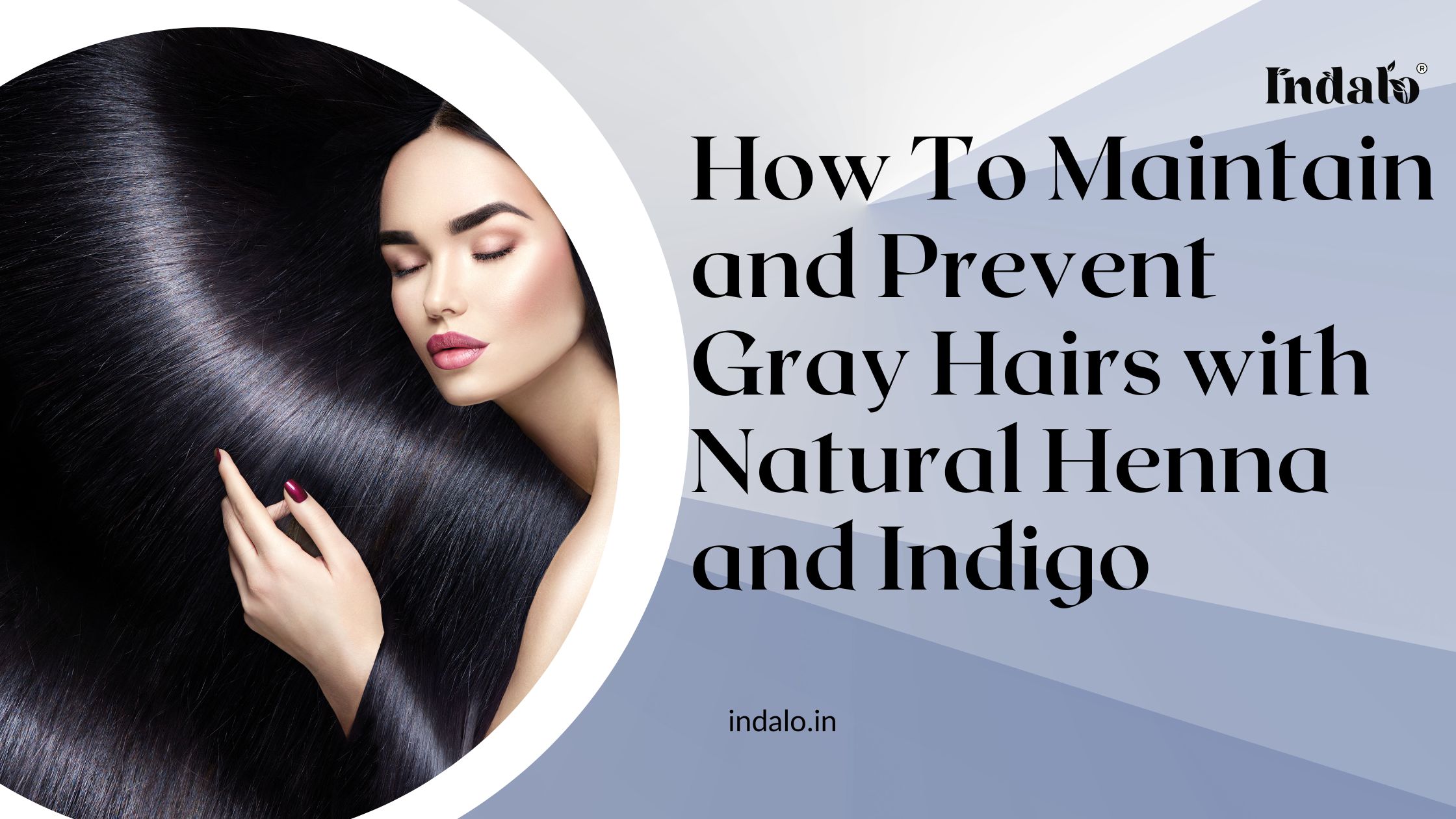There is no need to panic or worry about losing your hair color. There are many ways to slow and prevent the process of graying hair with natural, herbal ingredients. In this article, we will give you a step-by-step guide on how to maintain and prevent gray hairs using henna, indigo, and other natural ingredients that won't damage your scalp or hair.
What is henna?
Henna and indigo are two natural hair dyes that can be used to prevent and cover gray hairs. Henna is a red-orange dye that comes from the leaves of the henna plant, while indigo is a blue-violet dye that comes from the leaves of the Indigo plant. Both dyes can be used together to create a natural black color.
When using henna and indigo hair color powder to dye your hair, it is important to follow the instructions carefully. First, the henna must be mixed with water to create a paste. This paste should then be applied to your hair and left on for 3-4 hours. After this time, the indigo should be mixed with water and applied to your hair. The two dyes must be left on your hair for 6-8 hours before being rinsed out.
If you want to prevent gray hairs from appearing in the first place, you can use henna and indigo as a natural hair treatment. Simply mix the two dyes together and apply them to your scalp once every week. This will help to keep your hair healthy and prevent any grays from coming in.
How does henna help with graying hair?
Henna is a plant that has been used for centuries to dye hair, and it can also be used to help prevent and treat gray hair. The leaves of the henna plant contain a pigment called lawsone, which can penetrate the hair shaft and deposit color. Natural Henna Hair Color can also help to strengthen and condition the hair, and it has been shown to promote hair growth. Indigo is another plant that can be used to dye hair, and it can also help to prevent and treat gray hair. Indigo works by depositing a dark color on the surface of the hair shaft, which can help to camouflage any gray hairs.
How does indigo help with graying hair?
As we age, our hair follicles produce less melanin, the pigment that gives our hair its color. This can result in gray, white, or silver hair. While there is no sure way to prevent graying hair, indigo may help to slow the process.
Indigo is a plant with blue flowers that has been used for centuries as a natural dye. When applied to the hair, it can darken the strands and help to cover up any grays. Indigo can also be used in conjunction with henna to give the hair a more natural-looking color.
While there is no guarantee that indigo will completely prevent your hair from graying, it may help to slow down the process and keep your hair looking its best for longer.
What are the benefits of using henna and indigo for your hair?
Henna and indigo are both plants that have been used for centuries to color hair. Henna can be used to create a red or orange tint, while indigo creates a blue or green tint. Many people use these two plants together to create a black or brown color.
There are many benefits to using henna and indigo on your hair. First, they are completely natural and will not damage your hair like chemical dyes can. Second, they can actually improve the health of your hair by adding strength and shine. Third, they are much cheaper than commercial hair dyes. Finally, they are very easy to use and you can find them at most health food stores.
What kind of results can you expect from using henna and indigo on your hair?
While henna and indigo are both natural hair dyes, they produce different results. Henna will give your hair a red or reddish-brown tint, while indigo will result in a darker, blue-black color.
If you're looking to cover up some gray hairs, then using a mixture of henna and indigo is a great option. The two colors can be blended together to create a shade that closely resembles your natural hair color. This method is also less harsh on your hair than chemical dyes, so it's a good choice if you're looking for a more natural option.
Keep in mind that it may take a few applications to get the desired results, and the color will eventually fade over time. To maintain your new color, you'll need to reapply every 4-6 weeks.
What are some downsides to henna and indigo use on your hair?
Indigo and henna can both be very drying to your hair, so if you already have dry or damaged hair, you may want to avoid using them. They can also be difficult to remove from your hair, so if you're not careful, you could end up with stained hair. Finally, they can sometimes make your hair look a bit greenish, so if you're not into that look, you may want to stick to other methods of coloring your hair.
How do I apply this treatment to my hair?
If you're looking to prevent gray hair with natural henna and indigo, the first step is to make a paste. To do this, mix together equal parts of each powder with water until you have a thick consistency. Once you have your paste, apply it to your hair from root to tip, making sure to cover all of your strands. Leave the paste in for 3-4 hours before rinsing it out with shampoo and conditioner. You should notice a difference in the color of your hair after just one treatment!
0






